Introduction to Bell Snails
In the warmer waters of the Kragus reside flugelhorn snails which populate the basin closest to the shores. Flugelhorns, better known by their common name “bell snails” are neamed after the shape of their mouths which reassemble the bell of a trumpet. These mouths can expand to great lengths to engulf water to filter out helpless micorgrnisims.
Lifestyle and Habitat
Diet:
Bell Snails filter organic detritus and phytoplankton from warm oceanic waters. When their proboscis is closed they can passively consume floating detritus that moves past their nucha. A proboscis that is fully raised and opened increases surface area and allows for a higher absorption rate of organic matter. Their mouths only open at opportune times when the ocean current is strong but not strong enough to damage the thin tissue that composes the proboscis.
Locomotion:
Extensive longitudinal muscles along with flat muscles at the base of the bell snail’s foot allow for 360 degrees directional movement. When resting the retractor muscles tightly grasp the substrate underneath. Bell snails prioritize high locations such as large stones or sessile creatures like sea stalks. These locations act as beneficial vantage points that can allow for a greater degree of passive suspension feeding. Additionally these spaces grant the animal full freedom to actively filter feed. Colonies of bell snails can be observed slowly crawling upon each other competing over the highest most beneficial point for feeding.
Species
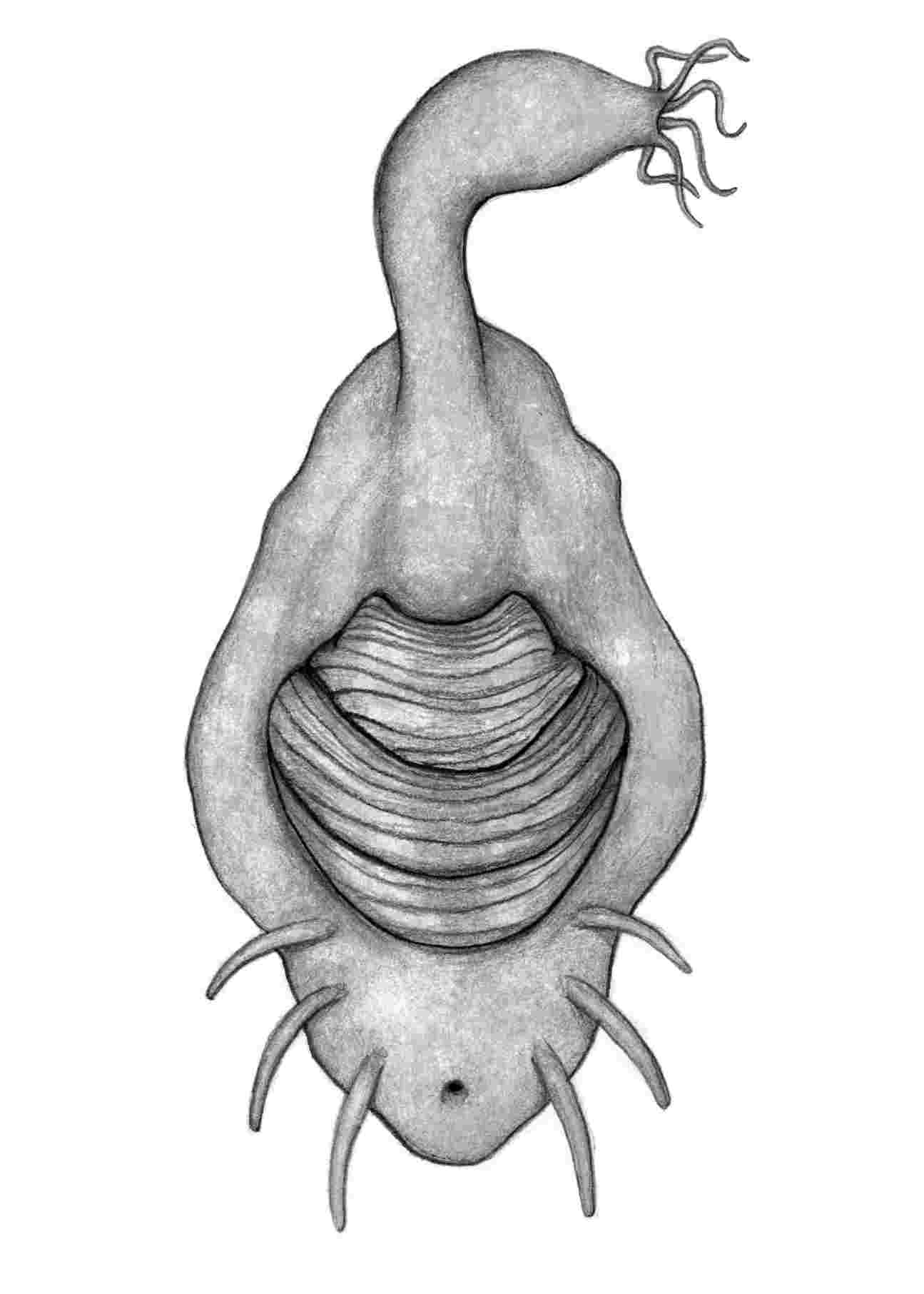
Hirsutusdorsi whiskia
Common Name: Whiskered bell snail
Mantle Circumference: ~11.4cm (~4.5in)
Size: 24.9cm (~9.8in)
Description: H. whiskia has rows of small tentacles that line the ridge of the mouth. When the mouth is held open the tentacles assist with manipulating water over the mouth to increase the filtration of microorganisms. The exposed mantle is depressed and flat, annulated with small ridges. A cavity is located between two rounded projections at the mantle’s apex that allow H. whiskia to tuck the majority of the nucha inside for protection.
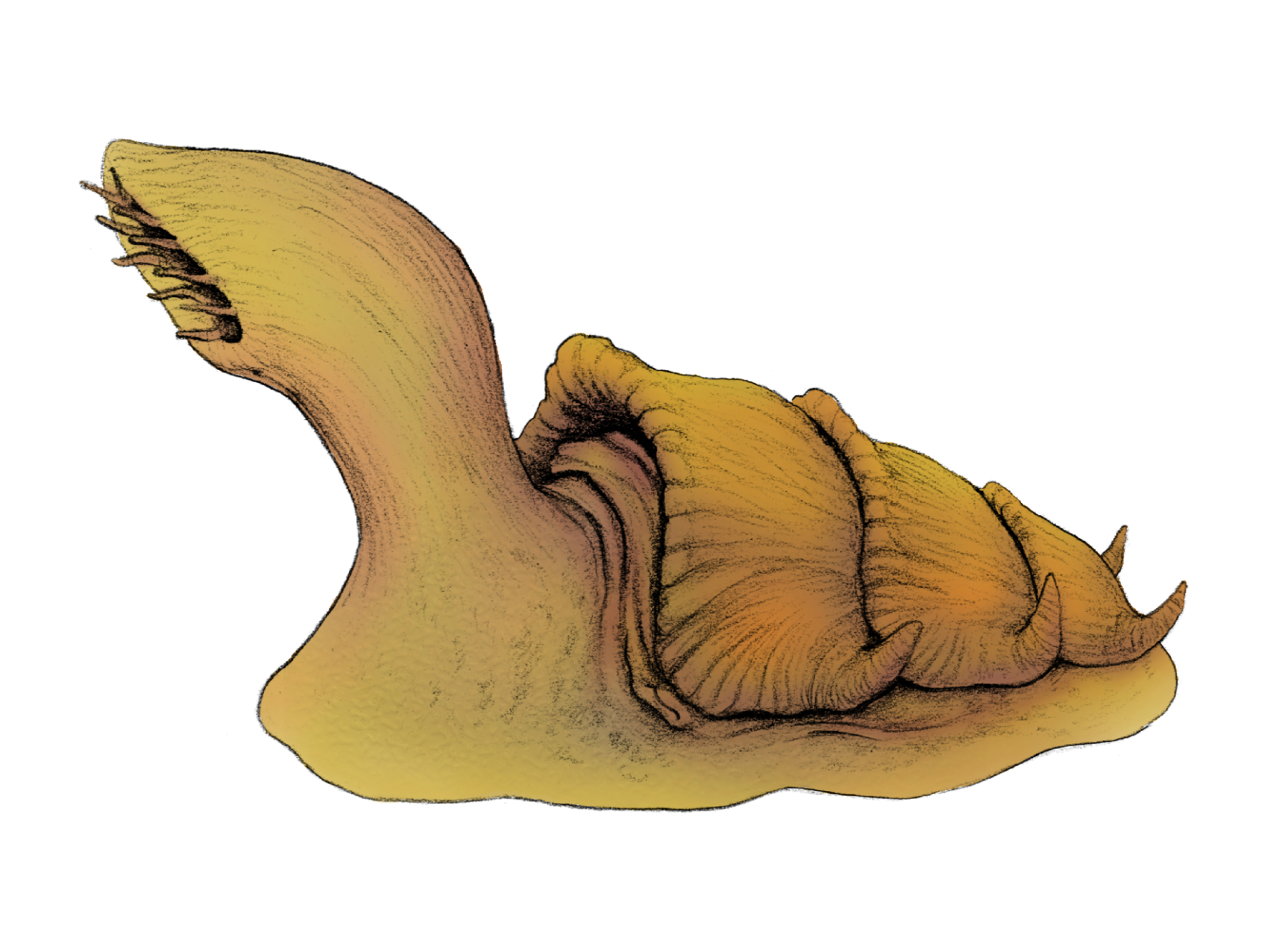
Funiculabrum dyson
Common Name(s): Frilled lip snail or common mustached bell snail
Mantle Circumference: 14cm (5.5in)
Size: 28cm (11in)
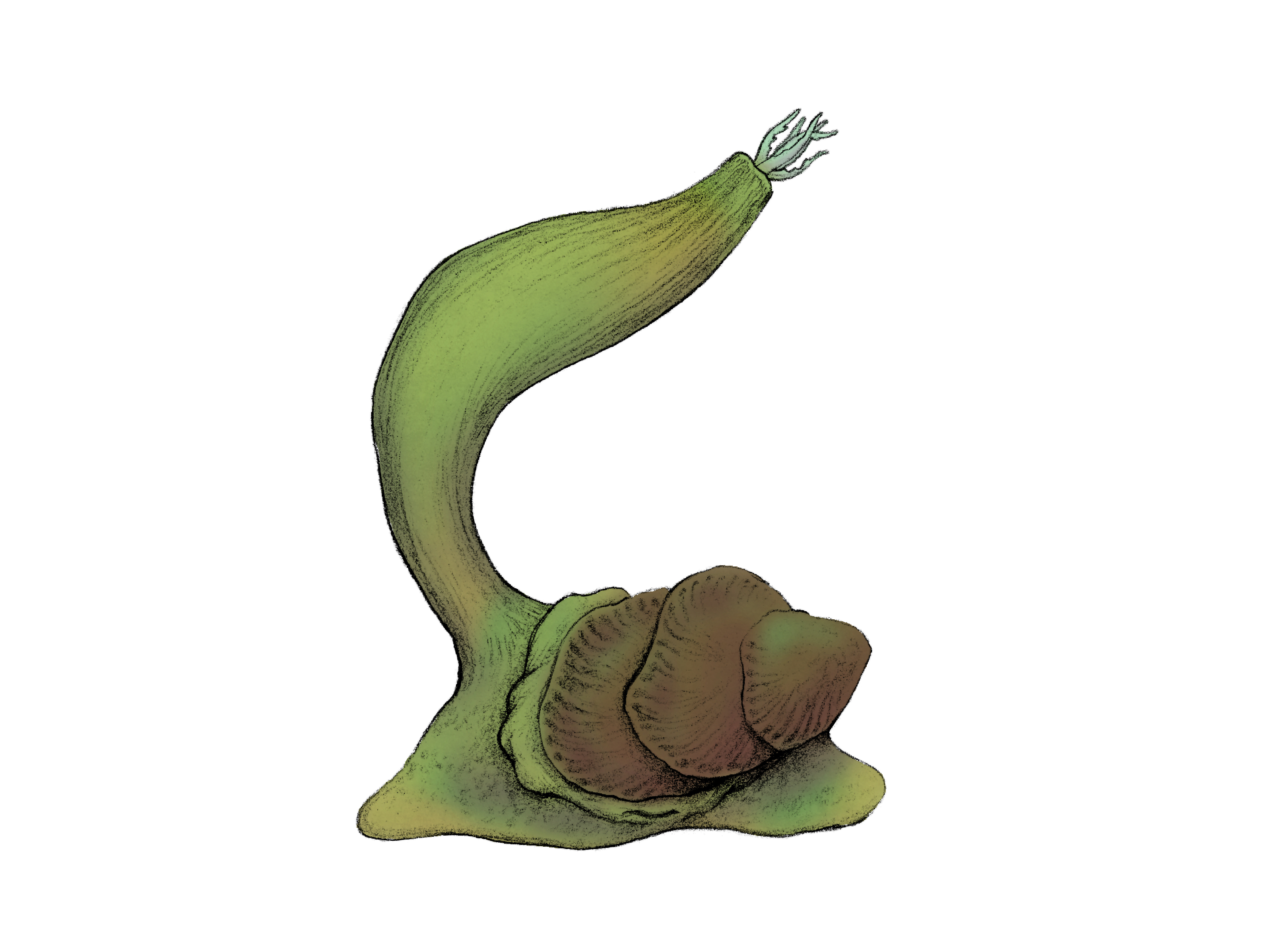
Nuchaprotentus virens
Common Name: Light-green bell snail
Mantle Circumference: ~8.3cm (~3.3in)
Size: 10cm (3.9in)
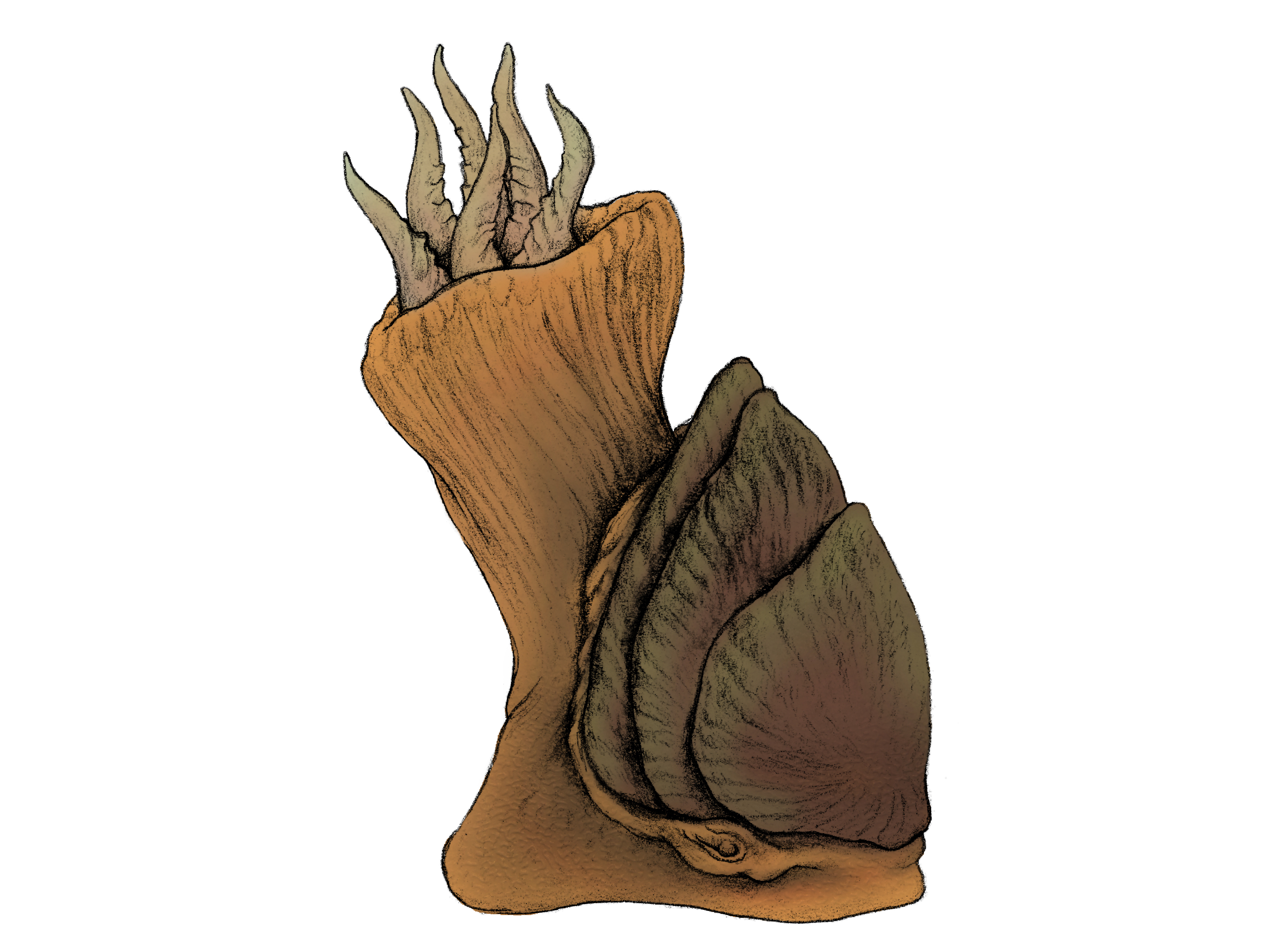
Haworthbucina lutea
Common Name: Orange-brown bell snail
Mantle Circumference: ~11.2cm (~4.4in)
Size: 18.5cm (7.3in)
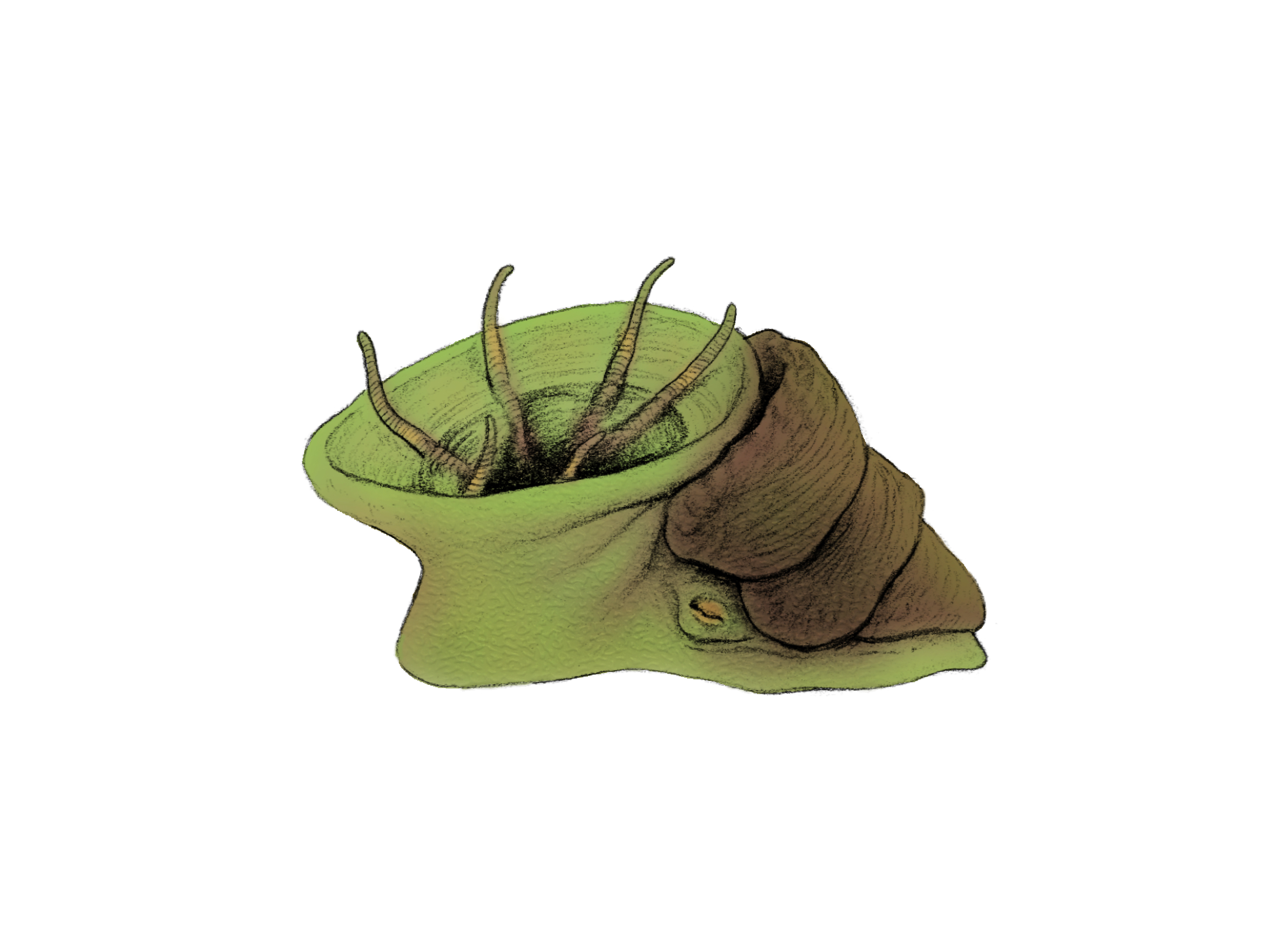
Bucinalatus patera
Common Name: Common bell polyp
Mantle Circumference: 2.1cm (0.8in)
Size: 2.4cm (6in)

